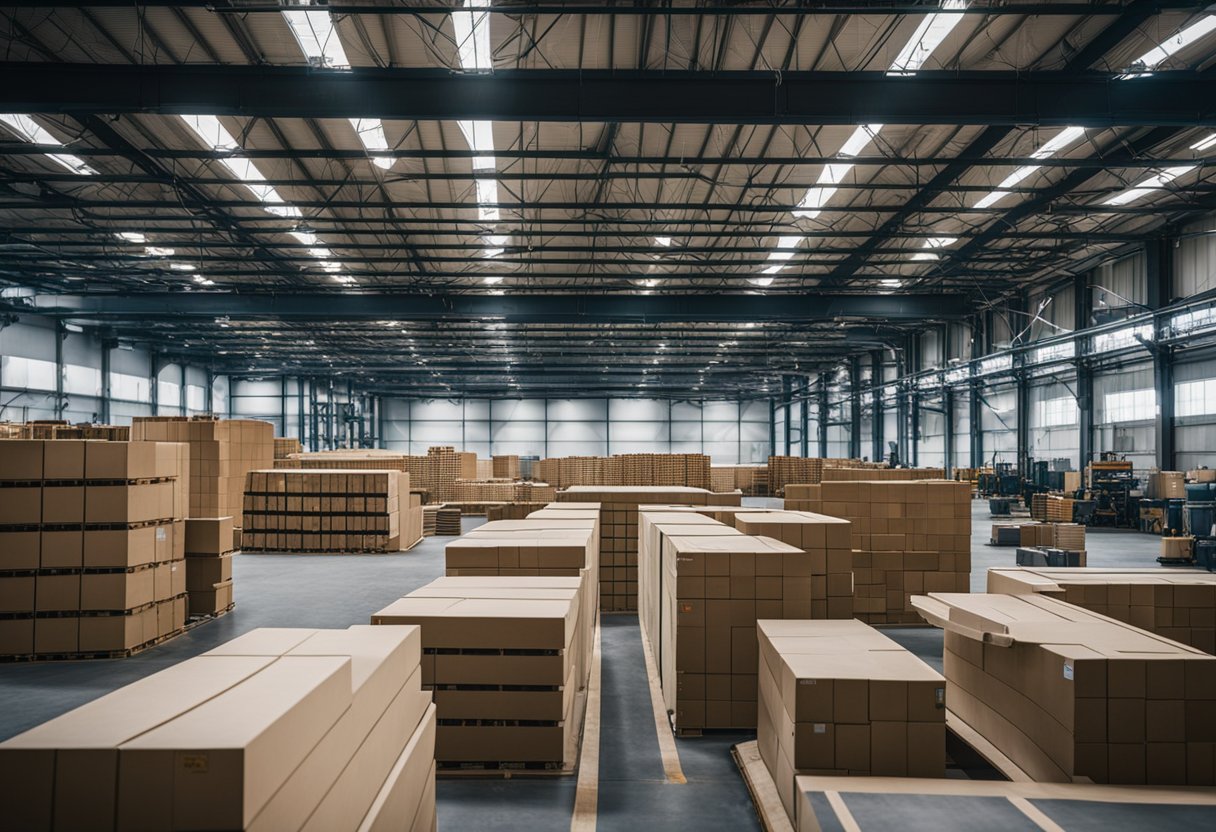XCV panels represent a significant advancement in the realm of energy conversion technology. They are a type of solar panel system that consists of small, interconnected photoelectric cells, working together to transform sunlight into electrical energy. This technology is designed to maximize efficiency by using highly conductive materials, which allow for an impressive rate of energy conversion. As a revolutionary step in solar energy, XCV panels exhibit potential for wide-ranging applications, making them an appealing option for those seeking sustainable energy solutions.

The technology behind XCV panels is not limited to solar energy applications. In industrial settings, these panels are commonly referred to as External Control Voltage panels, vital for the control and coordination of machinery and processes. The precision control enabled by XCV panels allows for adjustments to production lines, power distribution regulation, and consumption monitoring, illustrating the multifaceted nature of this technology.
The architectural sector also benefits from the application of XCV panels in the form of structural insulated panels (SIP). Here, the term XCV denotes a specific construction involving a rigid foam insulation core flanked by structural boards, such as oriented strand board (OSB). This configuration ensures energy efficiency in building materials, reducing energy costs and improving insulation, and represents yet another utilitarian aspect of XCV panel technology.
Content Compass
Understanding XCV Panels
In the landscape of renewable energy, XCV panels stand out for their exceptional performance and adaptability. These panels are at the forefront of integrating advanced materials for enhanced energy efficiency.
Technical Specifications
XCV panels incorporate a range of advanced materials, including graphene, known for its excellent electrical conductivity and strength. The use of such materials allows the panels to operate with a high degree of efficiency, surpassing traditional solar panels in both energy efficiency and durability.
- Efficiency: Utilizing graphene, XCV panels achieve greater electricity generation per square meter than traditional options
- Durability: With advanced conductive materials, these panels are more resilient under various environmental conditions
- Versatility: Their design enables easy integration into diverse settings, from residential to industrial
- Adaptability: XCV panels are designed to be compatible with a variety of renewable energy sources, increasing their applicability
Comparative Analysis
Compared to traditional solar panels, XCV panels offer:
- Enhanced performance: They reliably deliver more power even under suboptimal conditions like low light or high heat
- Superior adaptability: These panels can be tailored for use in different climates and locations, making them a versatile choice for global energy needs
- Pioneering use of advanced materials like graphene ensures that XCV panels push the boundaries of solar technology
- Renewable energy efficiency: They convert more solar energy to electricity, optimizing the use of renewable resources
The transition to renewable energy sources is accelerated by innovations like XCV panels due to their versatility and enhanced performance metrics.
Applications of XCV Panels

XCV Panels are revolutionizing energy usage and technology application across multiple sectors, demonstrating remarkable versatility and integration capabilities. They are enhancing productivity through innovative manufacturing techniques and improving user experience in numerous devices.
Industrial Uses
In industrial settings, XCV Panels play a critical role by integrating into manufacturing processes to improve productivity. These panels are utilized in research centers and manufacturing facilities to offer energy solutions that are both efficient and sustainable. Their robust design adapts well to various environments, proving essential for the healthcare and navigation industries, as well as sectors where precise operations are critical.
Residential and Commercial Integration
XCV Panels can be seamlessly integrated into the roofs and windows of buildings, facilitating a dual function of energy capture and insulation. Their application extends into both residential and commercial buildings, offering a cost-effective alternative to traditional energy sources. With minimal maintenance and cleaning requirements, these panels are a smart choice for sustainable building design.
Consumer Electronics
The impact of XCV Panels is profound within consumer electronics, where they enhance the user experience in products like smartphones, televisions, and gaming devices. The panels’ high refresh rates and resolution quality have also seen them used in advanced display technologies, such as tablets and laptops, offering consumers an immersive entertainment experience.
Advanced Settings
In more advanced applications, XCV Panels facilitate the development of new technologies in augmented reality, graphic design, and video editing. Their adaptability is crucial in healthcare settings for augmented reality navigational aids during surgeries. XCV Panels also contribute to innovation in entertainment, propelling graphic design and video editing capabilities to new heights.
Installation and Maintenance
The installation and maintenance of XCV panels are critical for their cost-effective operation, reliability, and longevity. It is essential to adhere to safety protocols and compliance regulations during installation to ensure optimal performance and flexibility in various applications.
Installation Guidelines
Proper installation is the foundation for the performance and reliability of XCV panels. They should be installed by following these steps:
- Site Assessment: Evaluate the installation site to ensure it is suitable for the XCV panels, considering factors such as sunlight exposure and roof integrity
- Safety Protocols: Adhere to all safety standards to protect installers and the system
- Compliance: Ensure the installation meets all local and national electrical codes
- Mounting and Securing: Use the correct mounting equipment to secure panels to the installation site without causing stress on the components
- Wiring: Follow the manufacturer’s guidelines for proper electrical connections and verify all wiring is done safely to prevent electrical hazards
The cost of installation can vary, but adhering to the correct procedures can reduce the need for future troubleshooting and repairs.
Maintenance Procedures
To maintain the panels’ efficacy and extend their lifespan, regular maintenance procedures should be conducted:
- Cleaning: Regularly clean the panel surfaces to remove dust and debris that can affect performance
- Inspection: Conduct routine inspections for any physical damage or signs of wear and ensure electrical connections are secure
- Troubleshooting: Quickly address any performance issues by reviewing system diagnostics and resolving any technical faults
- Performance Monitoring: Regularly evaluate system performance to ensure it is operating at peak efficiency
Maintaining XCV panels is generally cost-effective, especially when regular maintenance is prioritized, which helps in preventing major repairs and sustaining system performance.
Benefits and Advantages
XCV panels emerged as a valuable asset in the market due to their superior energy efficiency, technological advancements, and positive environmental impact. These benefits have made them a popular choice in various industries, providing cost-effective and sustainable solutions.
Energy Efficiency and Savings
XCV panels are designed with energy efficiency in mind. They achieve higher voltages and greater power output, translating into cost savings for users. Their integration with control relays allows for meticulous electricity management, bringing about reductions in energy use and notable improvements in overall system efficiency.
Environmental Impact
Using XCV panels as a renewable energy source can significantly reduce carbon emissions. Their ability to produce energy more efficiently lessens reliance on fossil fuels, contributing to sustainability initiatives and a smaller carbon footprint. This transition to cleaner energy sources is crucial in combating environmental challenges.
Technological Edge
XCV panels incorporate the latest innovations in material science and semiconductor technology, resulting in revolutionary technology. The durability and customization options offered by these panels make them stand out. These adaptions ensure that each XCV panel system can be tailored to specific needs, making them a future-proof investment.
Economic Implications
The introduction of XCV panels has significant economic implications due to their impact on energy storage and market trends. They influence both the adaptability of energy systems and the return on investment for businesses adopting this technology.
Market Dynamics
XCV panels are reshaping the energy sector by enhancing the adaptability and efficiency of power systems. Market trends suggest a growing demand for these panels, driven by the need for more agile and responsive energy storage solutions. As industries increasingly prioritize sustainable and efficient energy use, the adoption of XCV panels is on the rise. Availability of advanced materials and technology has contributed to this trend, increasing market competition and driving innovation.
Cost Analysis
The economic viability of XCV panels primarily hinges on their cost-effectiveness and the long-term return on investment.
- Batteries: XCV panels, when integrated with advanced battery systems, can reduce the overall cost of energy storage. They optimize the use of batteries, thereby extending their lifespans and reducing replacement costs
- Adaptability: The highly adaptable nature of XCV panels allows for their use across various applications, further justifying the initial cost outlay due to their versatility and broad applicability
- Cost Trends: As technology progresses, the manufacturing costs are anticipated to decline, which will enhance the appeal and accessibility of these panels
In summary, XCV panels offer promising economic benefits through operational efficiency and a favorable balance between initial investment and long-term savings.